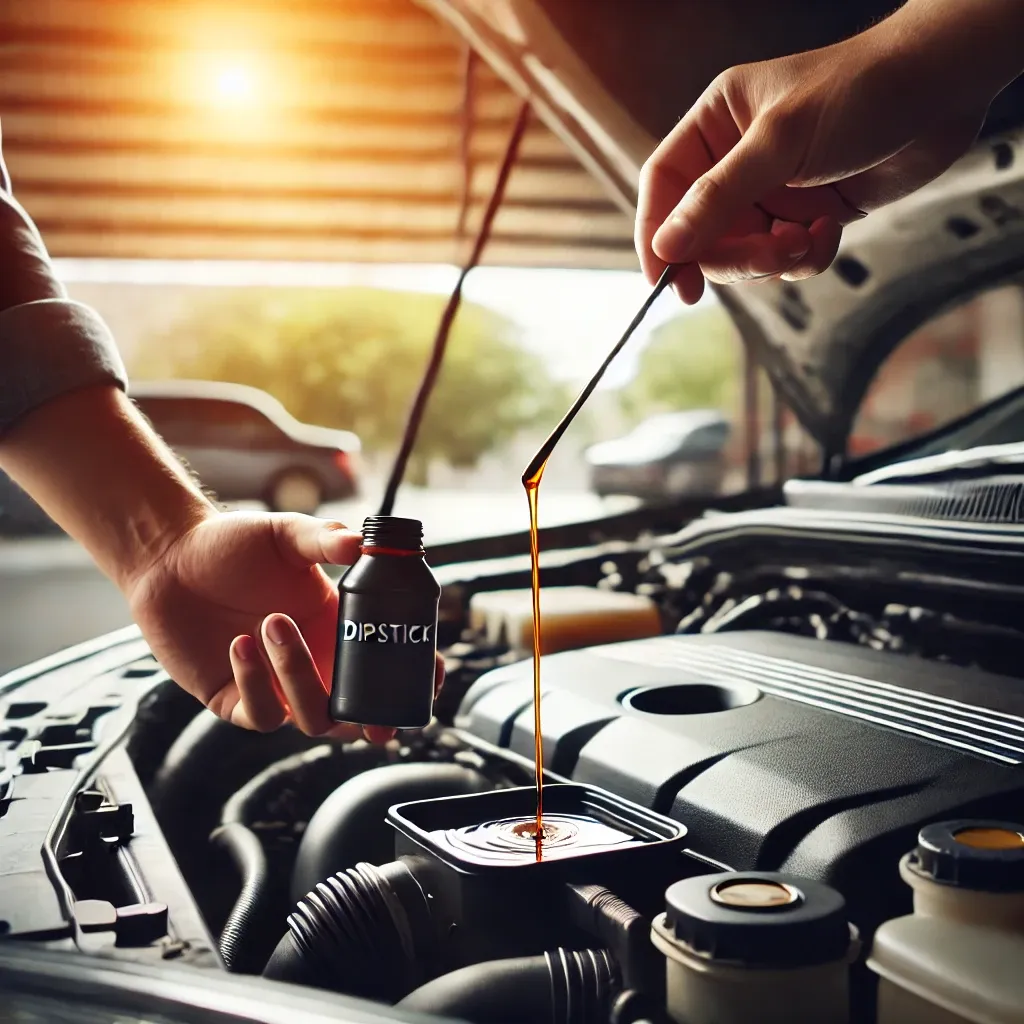Are you unsure how to check your car’s engine oil? Learn the steps to check your engine oil, how to identify the right oil color, and tips for maintaining your engine with regular oil checks.
Checking your car’s engine oil regularly is crucial for its performance and longevity. Whether you drive a Porter, Ray, or even a motorcycle, learning how to check your engine oil is an essential skill for every car owner. In this article, we will walk you through the steps of checking the engine oil, explain how to spot signs of oil problems, and share tips for keeping your engine running smoothly.
Engine Oil Check: Why It’s Important
Engine oil lubricates the moving parts of your engine, ensuring everything runs smoothly. Over time, oil breaks down, losing its ability to protect your engine and leading to potential damage. Regular oil checks help prevent this and keep your engine in top condition.
1. The Basics of Checking Engine Oil
Before diving into the specifics of checking oil for different vehicles, let’s review the general procedure. It’s simple, and you can perform it at home without the need for a mechanic. Here’s how:
-
Turn off the engine Ensure your engine is off and cooled down before checking the oil.
-
Locate the dipstick The dipstick is usually a long metal rod with a brightly colored handle. In most cars, it’s located near the engine block.
-
Pull out the dipstick Wipe the dipstick clean with a cloth or paper towel.
-
Reinsert and remove the dipstick again Check the oil level indicated by the markings on the dipstick. It should fall within the “low” and “high” markers.
-
Inspect the oil condition Besides the level, look at the oil’s color and texture.
2. Engine Oil Color: What Does It Tell You?
The color and texture of your engine oil can give you insight into its condition. Here’s what you should know:
-
New oil Fresh oil is typically a golden or amber color.
-
Used oil Over time, oil becomes darker, often brown or black, as it collects dirt and debris. Dark oil doesn’t necessarily mean it’s bad, but it may need to be changed if it’s thick or sludgy.
-
Milky or foamy oil This can indicate coolant mixing with the oil, which is a sign of engine problems.
3. What If the Oil Level Is Low?
If your oil level is low, it’s time to top it up. Refer to your vehicle’s manual to find the recommended oil type, and add oil slowly, checking frequently to avoid overfilling.
To learn more about oil color and how to identify problems, click the button below!
Checking Engine Oil in Different Vehicles
Each vehicle type may require slightly different steps or have different oil specifications. Let’s look at how to check the engine oil in various popular vehicles.
1. Porter Engine Oil Check
The Porter is a small commercial vehicle often used for cargo. Checking the engine oil in a Porter follows the same general procedure as other vehicles. However, due to its more utilitarian design, it’s important to inspect oil levels regularly to avoid excessive engine wear from frequent use.
2. Ray Engine Oil Check
The Ray, a smaller car, typically has a more compact engine layout. To check the oil, follow these steps:
-
Ensure the car is on level ground.
-
Wait for the engine to cool down if it’s been running recently.
-
Check the dipstick to ensure oil levels are adequate.
For specific concerns like oil consumption in Ray vehicles, check for oil leaks or burning oil symptoms.
3. Olando Engine Oil Check
The Olando, like other larger sedans, requires routine checks. One key difference is its oil change interval, which might be longer than smaller cars, depending on the engine size. Make sure to use the manufacturer-recommended oil grade for optimal performance.
In any case, checking oil for these vehicles is straightforward, and maintaining oil at the correct level prevents engine overheating and reduces wear.
To explore more about checking engine oil in various vehicles, click the button below!
How Often Should You Check Your Engine Oil?
The frequency of oil checks depends on your driving habits, vehicle type, and oil used. However, a good rule of thumb is to check your oil every 1,000 miles or once a month. Additionally, if you notice any unusual engine sounds or performance issues, it’s best to check the oil immediately.
1. Morning Oil Check
It’s always a good idea to check your engine oil in the morning before starting the engine. This ensures that you’re measuring oil levels when the engine has been off for several hours, allowing the oil to settle properly.
2. Used Car Engine Oil Check
If you’ve just purchased a used car, checking the engine oil becomes even more important. Used cars might have hidden issues such as oil leaks or neglectful maintenance. Ensuring the oil is clean and at the right level will help you avoid expensive repairs down the road.
3. How to Check Motorcycle Engine Oil
Motorcycles require a slightly different approach, as they often have a smaller dipstick or a sight glass to check the oil level. For motorcycles, make sure the bike is upright and leveled before checking.
Routine checks are vital, especially for used cars or motorcycles, which are prone to more wear and tear.
To learn about used car engine oil checks, click the button below!
Conclusion
Regular engine oil checks are a simple yet crucial aspect of vehicle maintenance. Whether you’re inspecting the oil in a Porter, Ray, or motorcycle, these checks can help prevent costly repairs and ensure your engine stays healthy for longer. By understanding the oil’s color, texture, and level, you can catch potential problems early and take action before they escalate.
Remember, a well-maintained engine is a long-lasting engine. So, next time you open your hood, be sure to check the oil!






